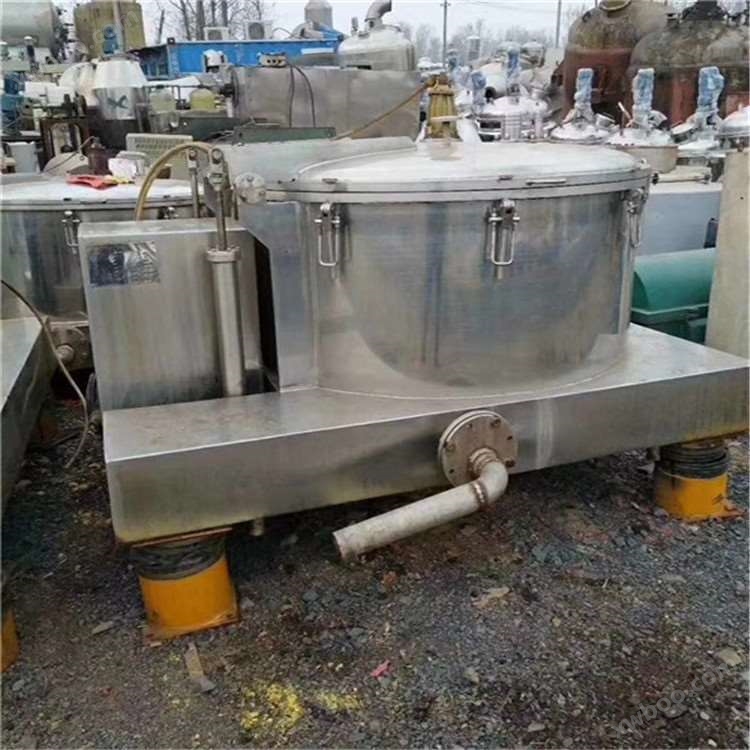handleSecond hand filtration centrifugeCentrifugal separators are widely used in various sectors such as chemical, petroleum, food, pharmaceutical, mineral processing, coal, water treatment, and shipbuilding.
A centrifugal separator is a mechanical device that uses centrifugal action to separate components from liquid and solid particles or liquid and liquid mixtures, also known as a centrifuge.
Industrial centrifugal separators can be divided into three categories based on their structure and separation requirements: filtration centrifuges, sedimentation centrifuges, and separators. Separators are only suitable for separating low concentration suspensions and emulsions, including disc separators, tube separators, and chamber separators.
Feed: When the frequency of the inverter is 30Hz, open the feed valve. When inspecting the material layer When the material layer is full, close the feed valve and delay for 208 seconds. The solid and liquid substances will automatically separate, and the material layer will automatically descend. When the signal of the material layer being full disappears, open the feed valve again and load the solid and liquid mixture to be separated again. Repeat the above action three times in a row.
When the material layer is full, close the feed valve and delay for 208 seconds. The solid and liquid substances will automatically separate, and the material layer will automatically descend. When the signal of the material layer being full disappears, open the feed valve again and load the solid and liquid mixture to be separated again. Repeat the above action three times in a row.
Solid liquid separation: When the third full charge signal is generated, the feeding valve is closed and the frequency converter frequency is increased to 50Hz for high-speed separation. The centrifugation time is set by the touch screen, and after the time is up, the frequency decreases to 40Hz.
Cleaning and drying (this action is selected according to the different separated objects): Open the cleaning valve for cleaning, and the cleaning time, pause time, and cleaning frequency can be set through the touch screen according to the different types of separated objects. After the cleaning process is completed, it enters the spin drying process. At this time, the frequency converter rises to 50Hz, and the spin time is set by the touch screen. After the spin drying is completed, it enters the unloading process. Unloading: Due to the excessive thickness of the material layer after spin drying, the scraper adopts segmented timed rotation for unloading, that is, the scraper rotates (time can be set) for 4 seconds and then descends to scrape the material. Repeat the above action until the scraper descends to the limit position in the next time, triggers the limit switch to make it rise to the top, and triggers the upper limit switch to stop.

